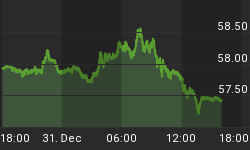One evident difference between FX markets today and in September 20 Fed rate hike is that the dollar is closer to its peak fed funds rate than it was nearly 2 months ago, which reduces traders' appetite to rush into high-yielding currencies. Persistently inflation readings above the European Central Bank's 2.0% preferred ceiling are showing no signs of retreat. Numerous ECB officials have warned that 2006 inflation could surpass the 2.0% for longer than expected.
Considering that Eurozone's manufacturing PMI gained reached a 13 month high in October at 52.7--which was also the 5th consecutive monthly gain in the index--markets may deem an ECB tightening to be more tolerable. The Eurozone's PMI echoes the 5-year high in Germany's IFO climate Index--which hit 98.7 in Oct - as well as the rise in Germany's Oct ZEW Indicator of Economic Sentiment.
While the Eurozone is closing the margin with the US on the manufacturing side, the region's services sector has already overtaken its US counterpart in September for the first time in over 2 years. These broadening improvements in the region accompanied by rising price pressures place the possibility of a Thursday rate hike by the ECB at 40-45%. But expect the euro to remain well supported in the event of a no-hike tomorrow as they deem the prospect of a December tightening quasi inevitable.
The fact that euro holds firm around $1.2040s after the Fed's unanimous rate hike and insistence to tighten further means that markets are discounting a 25-bp ECB move in December to stem inflationary pressures. But we think that even if the ECB does not tighten tomorrow (40% chance of a tightening), the euro would remain underpinned on fortified anti-inflation rhetoric in tomorrow's post-announcement press conference, paving the way for a December hike. Although a 25-bp ECB tightening would keep the Fed-ECB differential at 2.25% (after a Dec Fed hike), we expect it to signal the beginning of the end of the Fed's campaign.

The chart above shows the highly positive relationship between the ECB's refi rate and the IFO climate index since the inception of the euro in 1999. The relationship is especially cogent between 1999 and summer 2003, until after which the ECB had to maintain rates at their 40 year lows as part of the global reflationary campaign by the world's major central banks to combat dinsinflation. Stagnant Eurozone growth has prevented the ECB from joining the BoE and the Fed's tightening. But signs of a recovery (IFO, ZEW, today's larger than expected 36K drop in German unemployment) and inflationary pressures make an ECB tightening a high probability in Q4, thus providing key euro support at the $1.19, with a target between $1.22-1.23 at end of November.
Best,
















